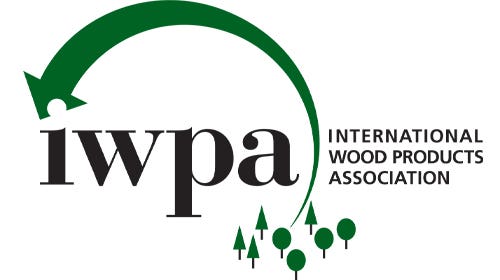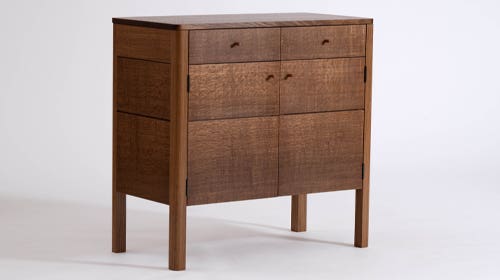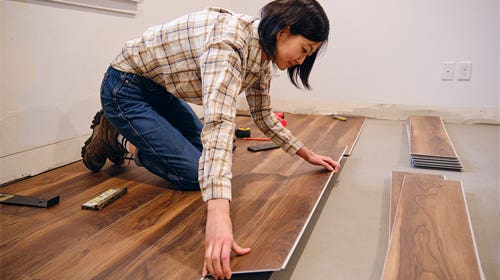Sapele remains a popular alternative
When the Brazilian government halted exports of genuine mahogany (Swietenia macrophylla) in 2001, and Peru followed suit by drastically cutting exports several years later, wholesalers were forced to look elsewhere…
When the Brazilian government halted exports of genuine mahogany (Swietenia macrophylla) in 2001, and Peru followed suit by drastically cutting exports several years later, wholesalers were forced to look elsewhere for species to fill the huge market void that was created. Although genuine mahogany, also known as bigleaf mahogany and Honduras mahogany, still trickles into the United States, popular alternatives have emerged such as African mahogany (Khaya spp.), sapele (Entandrophragma cylindricum), sipo (Entandrophragma utile), and Spanish cedar (Cedrela odorata).
The market for sapele has expanded over the years, according to importers interviewed by Woodshop News.
“In years past, when mahogany was coming out of Brazil and it was plentiful, you would bring in a load of sapele and sell the quartersawn with no problem and all the flat-cut sapele went nowhere,” recalls Matt Westmoreland, a wholesaler with World Timber Corp. in Hubert, N.C. “But now they kind of look at that flat-cut sapele as a pattern-grade mahogany, and it sells well, too. With mahogany prices up near $6 a board foot [wholesale] and sapele [about] $3.50, tons of sapele is being sold. African mahogany and sapele are the two that compete against each other for the mahogany business.”
“We’ve had sapele here for at least 25 years, and it has very good availability,” says Don Thompson of Thompson Mahogany in Philadelphia, a wholesaler of genuine mahogany since 1843. “It used to be an architectural wood only, and with the availability of Swietenia macrophylla drying up, this has become one of the major alternatives. It is used for windows and doors, interior and exterior moldings, and millwork. A positive is that it makes beautiful flooring, whereas mahogany is too soft. Sapele is about 10 percent harder than oak. It’s also used to some extent in musical instruments.”
Sapele, also called sapele mahogany or scented mahogany, grows in large sections of western and central Africa, from Sierra Leone to Uganda and south to Angola. Trees reach heights up to 180' with trunk diameters as large as 7'. Sapele is one of the large canopy trees in the equatorial West African forest. The reddish-brown heartwood resembles African mahogany and the sapwood is a white to pale yellow. Boards without flaws are occasionally available 10"-14" wide, in lengths exceeding 10'.
“We don’t sell much genuine mahogany anymore, so sapele and African mahogany kind of substitute pretty readily,” says Mike O’Neal of Cormark International, a retail and wholesale dealer in Weaverville, N.C. “It’s a little harder, a little more crystalline in appearance. We sell pretty much to furniture and cabinet guys, and wholesale a little bit through the chain stores who sell to the crafts people. Door makers like it. It gives you nice straight quartersawn for your stiles and rails.”
Quartersawn sapele often produces a ribbon figure. Large boards of what’s called pommele sapele exhibit an elongated blister pattern that creates a three-dimensional look, but are rather rare. Sapele logs exhibiting figure are often marked for the veneer mills.
When freshly cut, sapele has a spicy smell; some compare it to a cedar-like aroma. It needs to be properly handled and dried because it is very susceptible to sticker stain. Sapele is a fairly easy wood to work with, but has a slight blunting affect on tools, more so than African mahogany. The grain is interlocked and often wavy and the wood has an average reported specific gravity of .55. When planing and molding, tear-out can be a slight problem because of the interlocked grain. Sapele nails, screws and glues well. The wood also stains and polishes without any problem.
Pricing hasn’t increased much during the last two years, lumber dealers say. Retail prices for 4/4 FAS sapele range from $5.90 to $7/bf. Prices for pommele sapele are in the $15 to $45/bf range.







